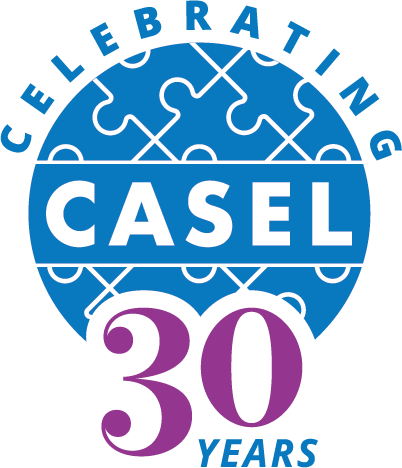
Key Points
Back to top- As demand for SEL grows, it’s important to ensure that schools, districts, and other partners choose SEL programs that work. The best way to do that is by selecting programs that are evidence-based.
- “Evidence-based” means that the effectiveness of an approach is supported by rigorous research.
- Since evidence-based approaches have been shown through rigorous research to bring about desired outcomes in the past, stakeholders can confidently select an approach that is likely to support young people in their context.
Demand for social and emotional learning (SEL) is growing. Consider these stats:
- 93 percent of parents say it is at least somewhat important to them that their children’s schools teach them to develop social and emotional skills (Pew Research Center, 2022).
- According to a 2022 EdWeek survey, 86 percent of educators say they place “some” or “a lot” of emphasis on SEL.
- District leaders named whole child development, or social and emotional learning, as their top priority for 2022-2023 (Tyton Partners).
However, as demand for SEL grows, so does the number of available programs or approaches. While it’s helpful to have a variety of options to choose from, it can also feel overwhelming. Educators, parents, and community members want the best outcomes for students, so it’s very important to know “what works.”
That’s where the evidence comes in. Here, I describe what it means when an SEL program or practice is “evidence-based” and how that designation can be helpful in determining effective SEL programs or approaches.
What does it mean if an SEL program or approach is evidence-based?
Back to topIn general, “evidence-based” means that the effectiveness of an approach is supported by rigorous research. In other words, research shows that an approach has been successful for a group of individuals, resulting in positive outcomes (Slavin, 2002). The approach can range from an entire curriculum or program to a single tool or practice. And the research might include randomized control trials, large-scale field research, experimental studies done in a lab, and/or systematic reviews or a meta-analysis of the research literature.
Whatever the type of research, rigorous research is characterized by:
- Sound research design. The research is designed to directly compare outcomes between individuals (e.g., students) who receive the approach and a “control group” of similar students who do not receive the approach.
- High-quality data analysis. Researchers apply the most precise statistical analysis and interpret results appropriately.
- Expert review of the results. The research is evaluated by experts who are knowledgeable about the field and research methodology.
- Replication and generalizability. The research is repeated to see if the results are similar with different groups of students. The strongest research is replicated in different settings (e.g., urban and rural districts) and with students who vary in age or other demographic variables, suggesting that the results are likely to be achieved in other contexts.
Why is it important for educators, families, and communities to select evidence-based SEL approaches?
Back to topUsing evidence to guide decision-making can support educator, family, and community goals to promote positive outcomes for students. Since evidence-based approaches have been shown through rigorous research to bring about desired outcomes in the past, these stakeholders can confidently select an approach that is likely to support young people in their context.
The U.S. Department of Education encourages using evidence-based approaches supported by rigorous research. Specifically, the Every Student Succeeds Act (ESSA) requires the use of evidence-based practices when possible. ESSA uses a system of tiers when evaluating evidence, with Tier 1 indicating “strong evidence.” The tiers provide flexibility for states and districts to prioritize approaches that fit local needs while also being most likely to yield positive outcomes.
What should I look for when considering evidence-based programs or approaches?
Back to topHere are some tips when considering the evidence:
- Understand who the student participants were in the study. Many groups of participants in research are WEIRD (Western, Educated, Industrialized, Rich, and Democratic) (Henrich et al., 2010) and often do not have demographic characteristics that reflect all communities. Therefore, when considering the evidence behind a program, consider if the students or schools in the study share meaningful characteristics with the population of students in your context.
- Check that the research isn’t outdated or based on a single study. The best evidence is supported by multiple studies and relevant to the changing educational landscape, including the integration of technology.
- Check that the research is reputable, including that it is presented in a peer-reviewed journal or by reputable professional organizations and government agencies. When research is rigorously evaluated by experts, you can be confident it’s sound. For example, CASEL reviews all programs in its Program Guide following a protocol that takes into consideration the research and implementation features. For a program to receive CASEL’s highest SELect designation, it must be evaluated by experts against these criteria, providing an additional layer of review over and above any review that the researchers themselves sought out.
To develop a strong evidence base, which will be most likely to lead to positive student outcomes, we need deep collaborations between researchers, practitioners, and policymakers. Research should be informed by questions that are meaningful for educators, reflect student populations, and have the potential to inform decision-making. Bringing together different perspectives and areas of expertise will be most powerful for promoting positive outcomes for youth.
Rista Plate is a senior researcher at CASEL. She received her Ph.D. in psychology from the University of Wisconsin-Madison and completed a postdoctoral fellowship at the University of Pennsylvania.
Related Posts:
- 30 Years of SEL Research: What’s New, and What’s Next?
- How Researcher-Practitioner Partnerships Spark Innovation
- Three Opportunities for SEL Research and Practice
Write for Us
Back to topAre you interested in writing for CASEL’s blog, Constellations? Learn more about what we’re looking for and how to pitch your idea!

